What’s the price range for lab grown diamond earrings?
Key takeaway:
- Lab-grown diamond earrings offer a more affordable option compared to natural diamond earrings.
- Pricing for lab-grown diamond earrings varies based on factors such as carat weight, color, and clarity.
- Fancy cuts and shapes, as well as fancy colored lab-grown diamonds, may also affect the price range of lab-grown diamond earrings.
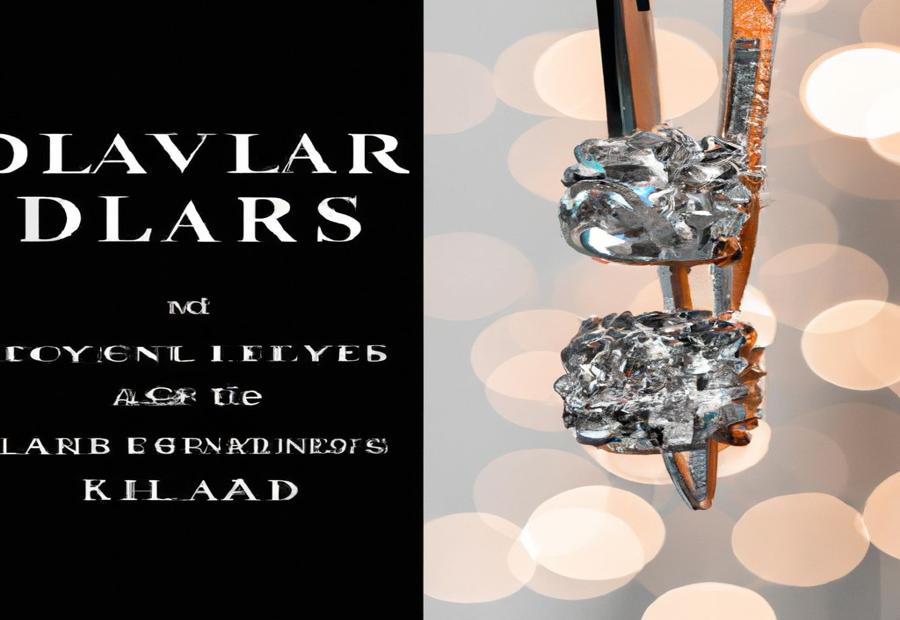
Photo Credits: Www.Lab-Grown-Diamond-Earrings.Com by Sean Nguyen
Lab-grown diamonds have revolutionized the jewelry industry, offering an alternative to natural diamonds. In this section, we will explore the definition and background of lab-grown diamonds, shedding light on their increasing importance and popularity as a choice for earrings. Dive into the fascinating world of lab-grown diamond earrings and discover why they have become a sought-after jewelry option for many.
Definition and background of lab-grown diamonds
Lab-grown diamonds, also called man-made or synthetic diamonds, are made in a lab. These sparklers are becoming popular for diamond earrings. They offer beauty, durability, and ethical sourcing.
Manufacturing them involves advanced tech to mimic the conditions of natural diamond formation. This is done by chemical vapor deposition or high pressure-high temperature. This creates a crystal lattice structure from carbon atoms, just like natural diamonds.
Comparing the two, lab-grown diamonds have the same composition and properties. But, they cost less due to their controlled production and short supply chain.
The price of lab-grown diamond earrings depends on carat weight, size, clarity, and color quality. Fancy cuts and shapes add uniqueness and change the pricing.
Fancy-colored lab-grown diamonds come in shades like pink, blue, and yellow. Their price depends on the color saturation.
Lab-grown diamond earrings offer an excellent option for those looking for quality and ethical jewelry. They are competitively priced and gaining popularity. It’s worth exploring the options before buying. Lab-grown diamond earrings are a great and affordable choice.
Importance and popularity of lab-grown diamond earrings
Lab-grown diamond earrings have grown in significance and popularity recently. They are crafted using advanced procedures in a laboratory. The increasing popularity of these earrings is due to various reasons.
- First, they offer a more sustainable and ethical option compared to natural diamonds. As they are created in a controlled environment, there is no need for mining.
- Second, they provide an affordable option for those who want diamond jewelry. Lab-grown diamonds are cheaper than natural diamonds, making them available to a wider range of people.
- Third, their quality and beauty are the same as natural diamonds. They sparkle, are clear, and come in different colors.
- Fourth, lab-grown diamond earrings come in a variety of options. They can be cut, shaped, and sized to match everyone’s style.
- Lastly, lab-grown fancy colored diamonds have become popular among jewelry lovers. These vibrant diamonds bring a unique look that is hard to replicate with natural diamonds.
Plus, eco-conscious consumers prefer lab-grown diamond earrings because they adhere to environmental standards without sacrificing style or quality.
These earrings have gained traction due to advancements in technology and research. Scientists have created lab-grown diamonds that look like natural ones. This has changed the diamond industry by providing an ethical and sustainable alternative. Thus, lab-grown diamond earrings have become trendy and desired choices for consumers who appreciate quality and fashion.
Experience the mesmerizing world of lab-grown diamond earrings – unlock their extraordinary charm!
Understanding Lab-Grown Diamond Earrings
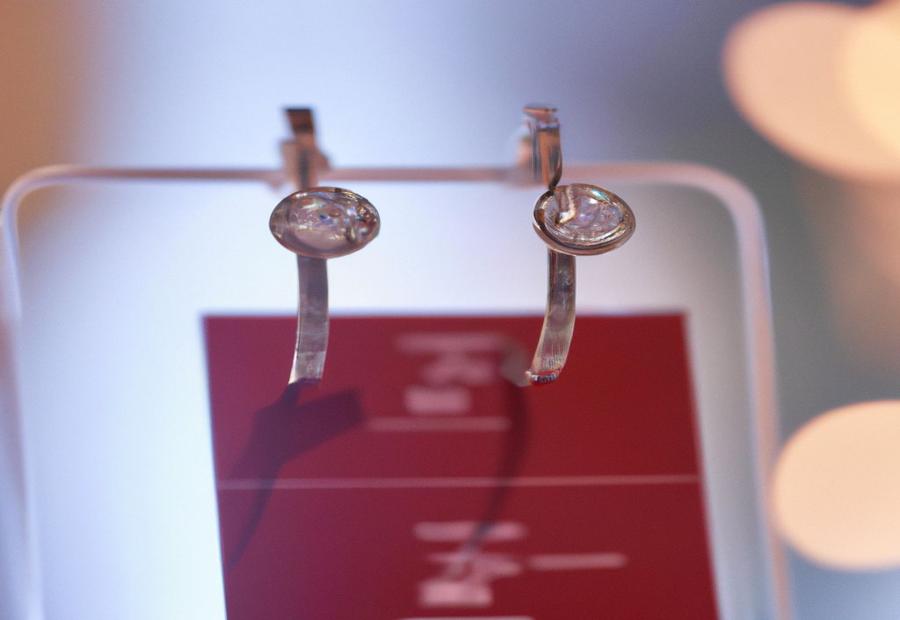
Photo Credits: Www.Lab-Grown-Diamond-Earrings.Com by Russell Moore
Lab-grown diamond earrings have garnered significant attention in the jewelry industry. In this section, we will delve into the fascinating world of lab-grown diamond earrings. Discover the intricate manufacturing process behind these gems and gain insights into how they compare with natural diamonds. Get ready to explore the remarkable advancements in technology that are reshaping the jewelry landscape.
Manufacturing process of lab-grown diamonds
Lab-grown diamonds are made using a manufacturing process that replicates natural diamond formation. This is done by creating an environment similar to that deep in the Earth’s mantle. Subjecting a piece of carbon to high pressure and temperature can create a lab-grown diamond in weeks or months.
The process starts with a tiny seed diamond, which is put in a chamber where it is exposed to heat and pressure. Carbon-rich gases are then added, making the diamond grow layer by layer.
Unlike natural diamonds, which require mining, lab-grown diamonds have a more controlled and eco-friendly production process. They are chemically and physically the same – even trained gemologists can’t tell them apart without special equipment.
Lab-grown diamonds come in many colors and shapes. Through additional treatments, like irradiation or HPHT processes, they can be fancy colors like blue, yellow, or pink. This lets people get more creative with their lab-grown diamond earrings.
Pro tip: Before buying lab-grown diamond earrings, verify the authenticity and quality through certification from GIA or other gemological laboratories. Also take into account carat weight, color quality, clarity, and cut style.
Comparison with natural diamonds
Lab-grown diamonds provide a different option to natural diamonds for earrings. These gems are produced in a lab instead of being sourced from nature. People like them because they are ethical, sustainable, and a more budget-friendly option than natural diamonds.
To compare lab-grown and natural diamond earrings, it’s best to look at a comparison table. This table can show the type of diamond, manufacturing process, source, ethics, price, and quality. This helps people decide based on their values.
Also, lab-grown diamonds come with more color possibilities. While natural diamonds typically only come in a few colors, lab-grown diamonds can be made in pink, blue, and yellow. This gives people more options when picking out diamond earrings.
Factors Affecting Pricing
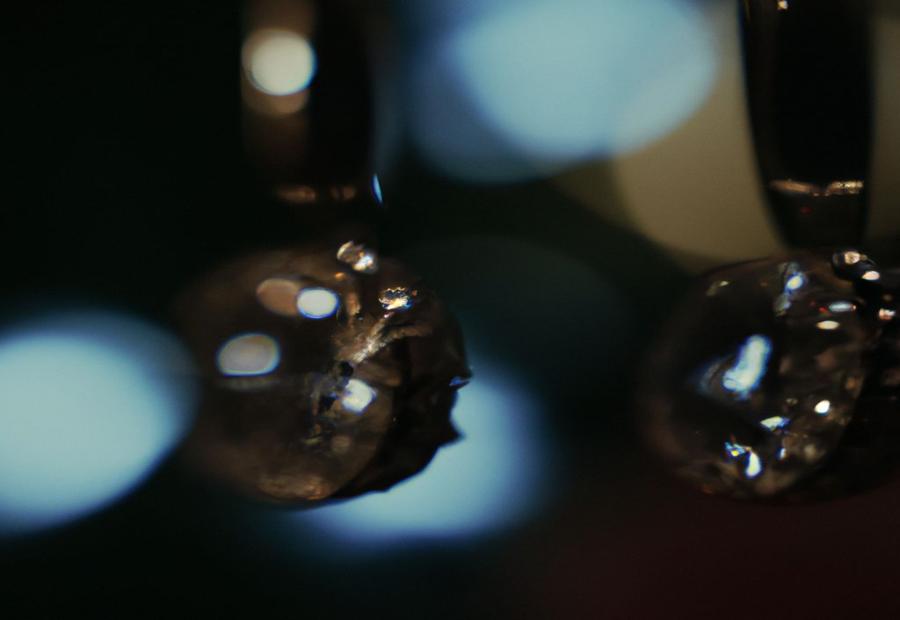
Photo Credits: Www.Lab-Grown-Diamond-Earrings.Com by Brandon Allen
Factors affecting the pricing of lab grown diamond earrings include carat weight, clarity and color quality, fancy cuts and shapes, and the presence of fancy colored lab-grown diamonds. Understanding these factors can help you make an informed decision when purchasing these stunning pieces of jewelry.
Carat weight and size
Carat weight and size are important when it comes to lab-grown diamond earrings. Let’s look at how they are made. Scientists use advanced technology to replicate natural processes. This allows them to create diamonds with the same chemical composition and physical properties as naturally occurring diamonds.
Lab-grown diamonds offer more flexibility when it comes to carat weight and size. They can be grown under controlled conditions. This means that earrings come in various sizes, from small studs to larger statement pieces.
Lab-grown diamonds are also a better value for money. They are more affordable than natural diamonds of similar carat weight. If you are looking for a larger stone without spending too much, lab-grown diamonds are a great option.
Clarity and color quality
Lab-grown diamond earrings are valued and attractive due to their clarity and color quality. Manufacturing processes ensure they have minimal inclusions or blemishes. Plus, they come in a range of colors from near-colorless to fancy colored.
Lab-grown diamonds can have similar clarity and color as natural diamonds. However, they’re usually more affordable. This makes them an attractive choice for those wanting high-quality earrings without spending too much.
Clarity and color quality are important when looking at lab-grown diamond earrings. They’re graded on the same scale as natural diamonds. But, because they’re grown in a controlled environment, they often have better clarity and color consistency.
For example, Sarah wanted to find a unique, stunning pair of diamond earrings for a milestone birthday. After researching and consulting experts, she found some with great clarity and color quality. Plus, they fit her budget and were more sustainable for the environment.
Fancy cuts and shapes
Fancy Cuts and Shapes!
Lab-grown diamond earrings come in many styles and designs, such as fancy cuts and shapes. These give the earrings personality and make them stand out from traditional diamond earrings.
Here are some examples:
- Round Brilliant Cut: This classic cut is known for its exceptional brilliance and fire. It’s a popular choice for lab-grown diamond earrings.
- Princess Cut: Square shape and sharp corners create a contemporary and modern look. It shows the brilliance of the diamonds beautifully.
- Cushion Cut: Rounded corners and larger facets give it a vintage-inspired look. It adds elegance and charm to the earrings.
- Emerald Cut: Rectangular shape with stepped facets. Creates a sophisticated appeal and highlights the clarity of the diamonds.
- Pear Shape: Combines round brilliant cut with a teardrop-shaped point. Adds creativity to the earrings.
- Marquise Cut: Elongated oval shape with pointed ends. Creates a dramatic effect on the earrings.
These fancy cuts and shapes provide customers with endless possibilities. Whether they prefer classic or modern design, there’s something for everyone.
Lab-grown diamonds can be cut into any shape or style just like natural diamonds! Plus, they come in vibrant hues – adding color to your earlobes, without breaking the bank.
Fancy colored lab-grown diamonds
Lab-grown diamond earrings with fancy colors can be a great choice. They are made with technology which adds trace elements to the crystal lattice, creating a range of colors like yellow, pink, blue, green, and orange.
The color quality of lab-grown diamonds is evaluated with hue, tone, and saturation – a more intense and evenly distributed color increases the value.
These diamonds are more accessible than natural fancy colored diamonds, due to advancements in technology and higher demand for colorful jewelry. Popular colors include vivid blues, vibrant pinks, and rich yellows.
The price of lab-grown diamond earrings may vary. Factors like carat weight, cut, clarity, and craftsmanship can affect the cost. However, they are eco-friendly and offer a wide range of colors to choose from.
Lab-grown fancy colored diamonds are an ethical and captivating option. They make luxury accessible to everyone, with affordability meeting quality.
Price Range for Lab-Grown Diamond Earrings
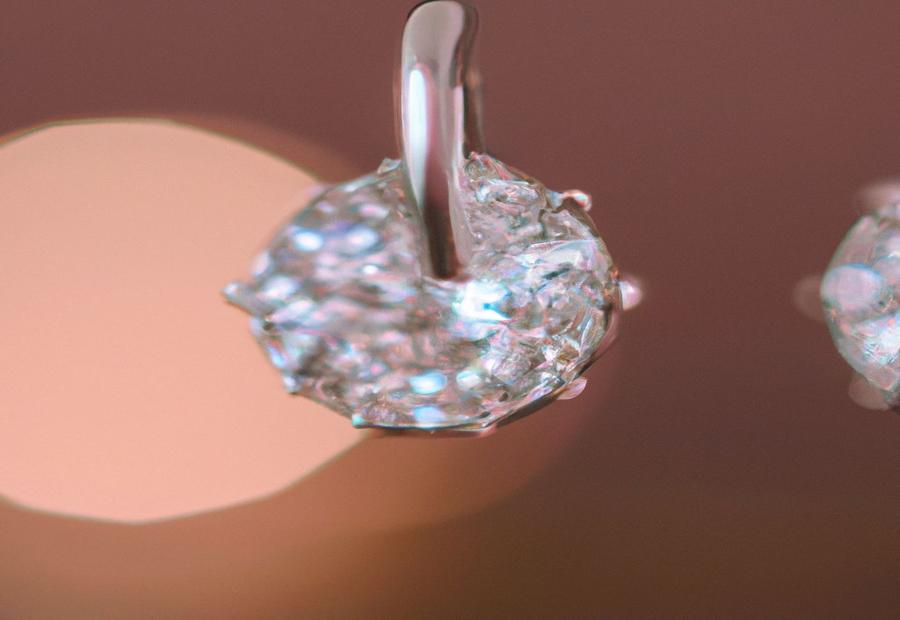
Photo Credits: Www.Lab-Grown-Diamond-Earrings.Com by Brian Robinson
Looking to find the perfect pair of lab-grown diamond earrings? This section delves into the price range for these exquisite gems. Discover a detailed price comparison between lab-grown and natural diamond earrings, as well as variations in price based on carat weight, color, and clarity. Explore the fascinating world of lab-grown diamonds and find out how you can get your hands on stunning earrings without breaking the bank.
Price comparison between lab-grown and natural diamond earrings
Lab-grown diamonds are becoming ever more in-demand. Folks are now opting for lab-grown diamond earrings instead of natural ones. This is because lab-grown diamonds offer a similar level of quality and beauty as natural diamonds, but at a better price. Advanced technology is used to recreate conditions of natural diamonds. This means lab-grown diamond earrings can be made with same carat weight, clarity, and color as those from natural diamonds.
To compare prices between lab-grown and natural diamond earrings, a table can be used. This table will have columns for carat weight, color, clarity, and cut. For each factor, rows will indicate applicability to lab-grown or natural diamonds. Plus, the price range for each. Consumers can then use this info to decide which type of diamond earrings fits their budget and preferences.
Fancy colored lab-grown diamond earrings should also be considered. They can be made in various colors artificially. Price for fancy colored lab-grown diamond earrings may vary depending on intensity of color and rarity. People interested in buying fancy colored diamond earrings should account for these factors when comparing prices between lab-grown and natural options.
Price variations based on carat weight, color, and clarity
Lab-grown diamond earrings’ prices vary, depending on carat weight, color, and clarity. These characteristics affect the cost. So, these factors are significant in deciding the value and price range of lab-grown diamond earrings.
To comprehend the pricing based on carat weight, color, and clarity, let’s view a table. This will show how various ranges of carat weight, color quality, and clarity alter the price range of lab-grown diamond earrings.
| Carat Weight | Color Quality | Clarity | Price Range |
|---|---|---|---|
| 0.5 – 1 | D-F | VVS-VS | $500 – $2,000 |
| 1 – 2 | G-H | SI1-SI2 | $2,000 – $5,000 |
| 2 – 3 | I-J | I1-I2 | $5,000 – $10,000+ |
This table displays bigger carat weights usually lead to a higher price. Also, diamonds with better color quality (ranging from D-F) usually cost more than lower color grades (G-H). Furthermore, diamonds with higher clarity grades (VVS-VS) have a higher price range than diamonds with lower clarity grades (SI1-SI2).
Tip: Remember, carat weight, color quality, and clarity influence the price of lab-grown diamond earrings. But, you must also think about your personal preferences and budget. This will aid in finding the ideal balance between quality, aesthetics, and value.
Conclusion
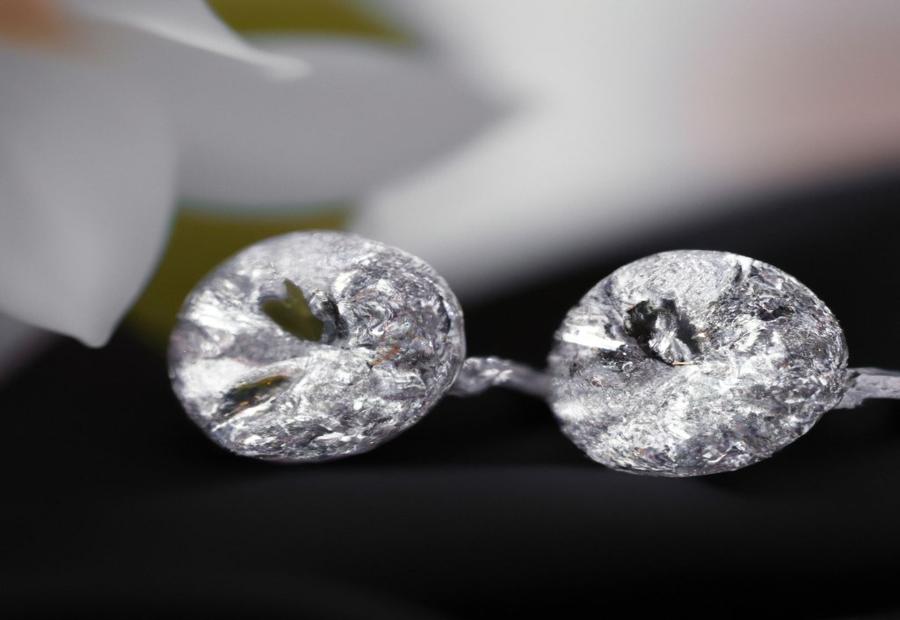
Photo Credits: Www.Lab-Grown-Diamond-Earrings.Com by Steven Clark
The price of lab grown diamond earrings varies greatly. Generally, they are more affordable than natural diamonds, with prices ranging from a few hundred to several thousand dollars. Size, quality, design, and materials all factor into the cost. Larger diamonds, higher clarity/color grades, and precious metals used for the settings will raise the price. Market trends and demand may cause price fluctuations. To get the best value, research and compare prices from different vendors.
Some Facts About Lab Grown Diamond Earrings Price Range:
- ✅ Lab-grown diamond earrings are available at a more affordable price range compared to natural diamond earrings. (Source: Team Research)
- ✅ Due to advancements in technology, the prices for lab-grown diamonds have decreased over time. (Source: Team Research)
- ✅ Lab-grown diamond earrings with larger carat weights can have a significant price difference compared to natural diamond earrings. (Source: Team Research)
- ✅ Colorless lab-grown diamond earrings are widely available and more affordable, as they are less likely to have yellow tint caused by nitrogen. (Source: Team Research)
- ✅ Lab-grown diamond earrings can come in a variety of fancy colors, providing a more affordable alternative to natural fancy colored diamond earrings. (Source: Team Research)
FAQs about What’S The Price Range For Lab Grown Diamond Earrings?
What is the price range for lab-grown diamond earrings?
The price range for lab-grown diamond earrings can vary depending on several factors such as carat weight, cut, clarity, and color. Generally, lab-grown diamond earrings are more affordable compared to natural diamond earrings. Prices can start as low as a few hundred dollars and can go up to several thousand dollars for larger carat weights and higher quality diamonds.
How has synthetic diamond pricing changed over time?
Synthetic diamond pricing has decreased over time. Initially, lab-created diamonds were too expensive to compete with natural diamonds. However, as technology improved and more lab-grown diamond producers entered the market, the prices for synthetic diamonds decreased. This decrease in pricing made lab-grown diamonds a more affordable alternative to mined diamonds, resulting in increased consumer demand.
Are larger carat weights more common in lab-grown diamonds compared to natural diamonds?
Yes, larger carat weights are more common in lab-grown diamonds compared to natural diamonds. Lab-grown diamonds have fewer size limitations, allowing for the production of larger carat weights. However, the price per carat of lab-grown diamonds does not increase exponentially with carat weight like natural diamonds. This means there can be a significant price difference between natural and lab-grown diamonds for larger carat stones.
How does color impact the pricing of lab-grown diamonds?
Color has less impact on lab-grown diamond pricing compared to natural diamonds. Colorless lab-grown diamonds are widely available at affordable prices since they are less likely to have a yellow tint caused by nitrogen. Additionally, lab-created diamonds can come in a wide range of fancy colors, offering a more affordable alternative to natural fancy colored diamonds.
What factors affect the clarity quality and pricing of lab-grown diamonds?
Clarity grade and imperfections affect the pricing of lab-grown diamonds, similar to natural diamonds. Inclusions from substances used in the growth process may result in visible imperfections and dark spots. Lab-grown diamonds often come with grading reports from institutions like the International Gemological Institute (IGI) or the Gemological Institute of America (GIA), which provide information on clarity quality and help determine the pricing of the diamonds.
Do lab-grown diamond earrings come with grading reports?
Yes, lab-grown diamond earrings often come with grading reports from institutions like the International Gemological Institute (IGI) or the Gemological Institute of America (GIA). These reports include information on carat weight, color, cut, and clarity, allowing for easy comparison with other graded diamonds. It is important to note that GIA grading reports are more costly, so most lab-grown diamonds receive grades from the IGI.

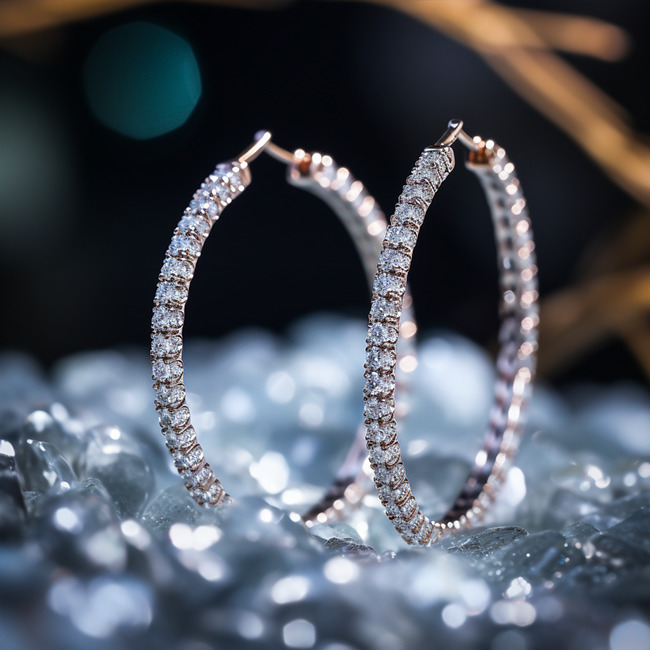
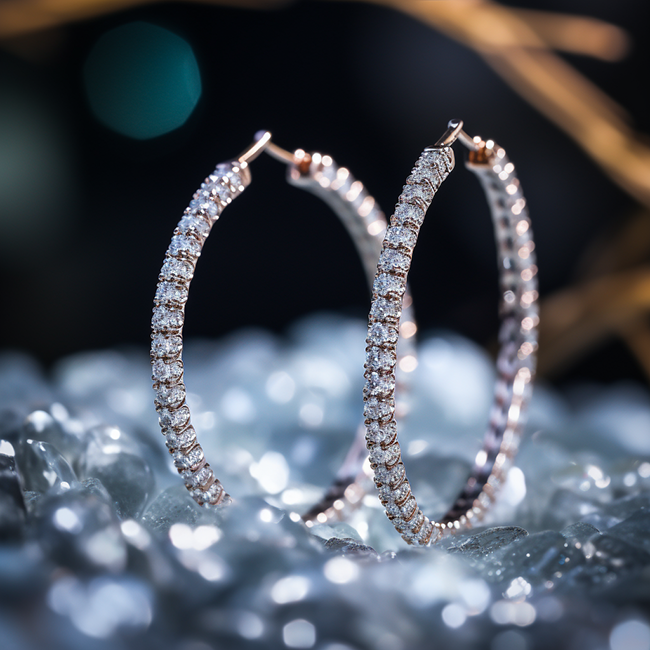
Leave a Reply